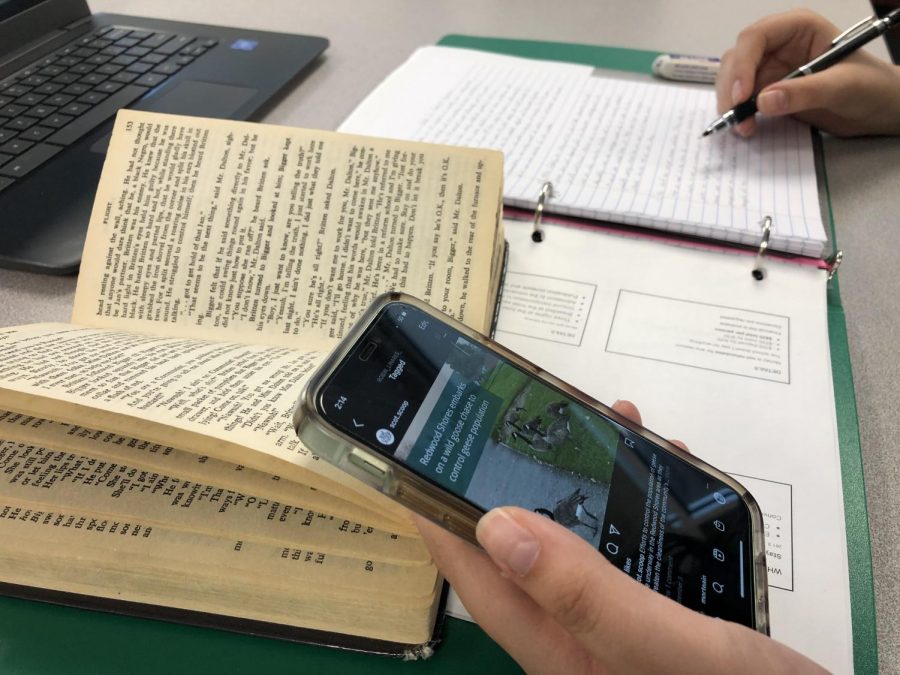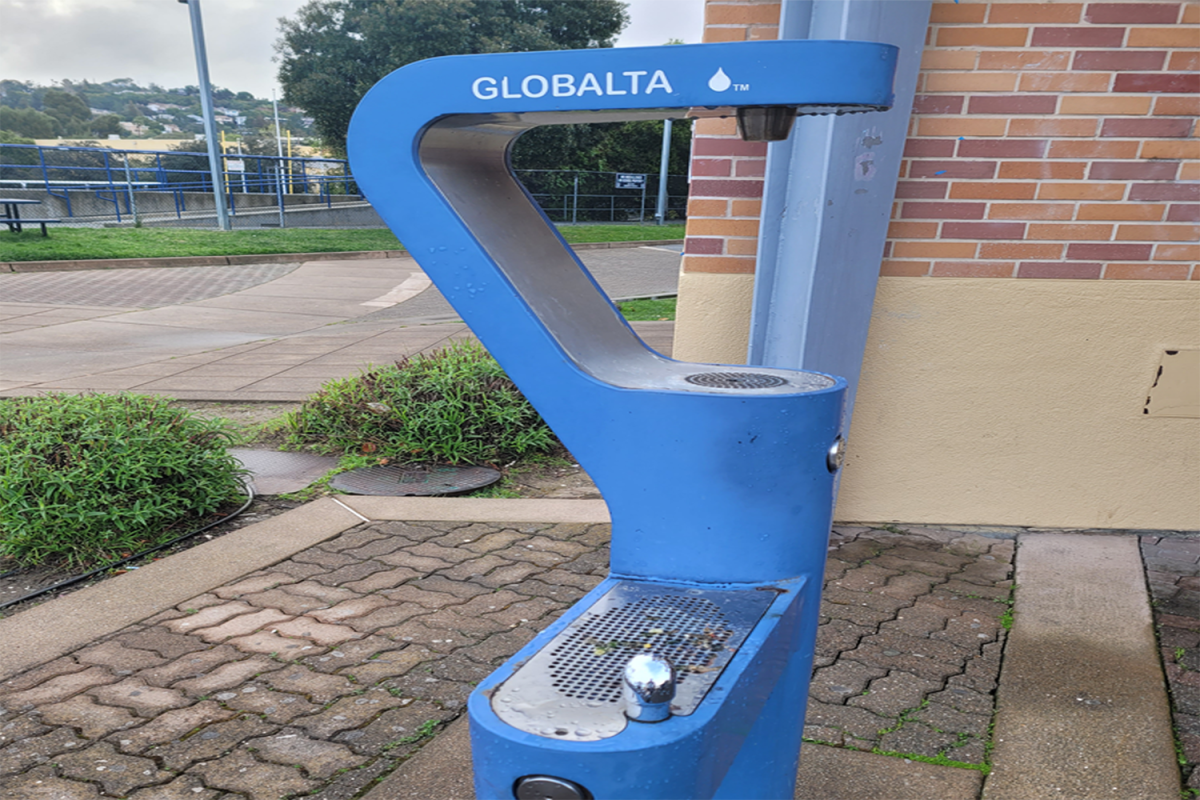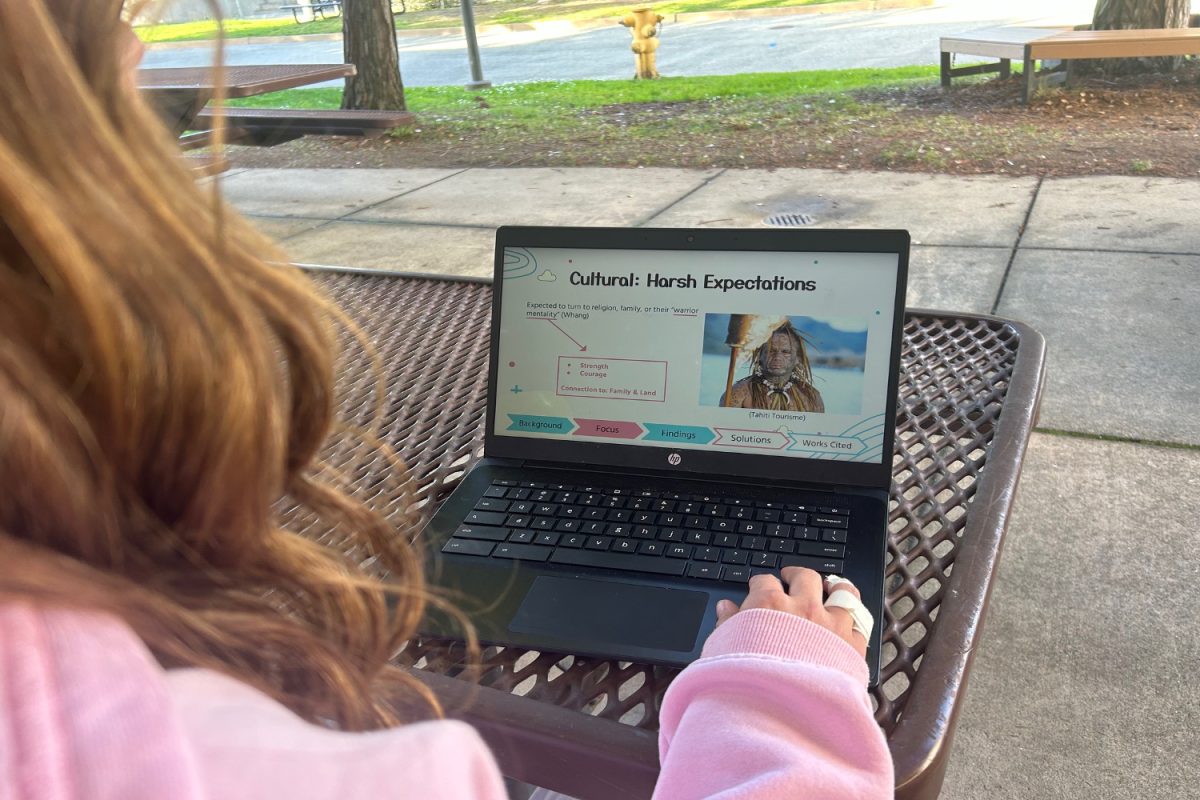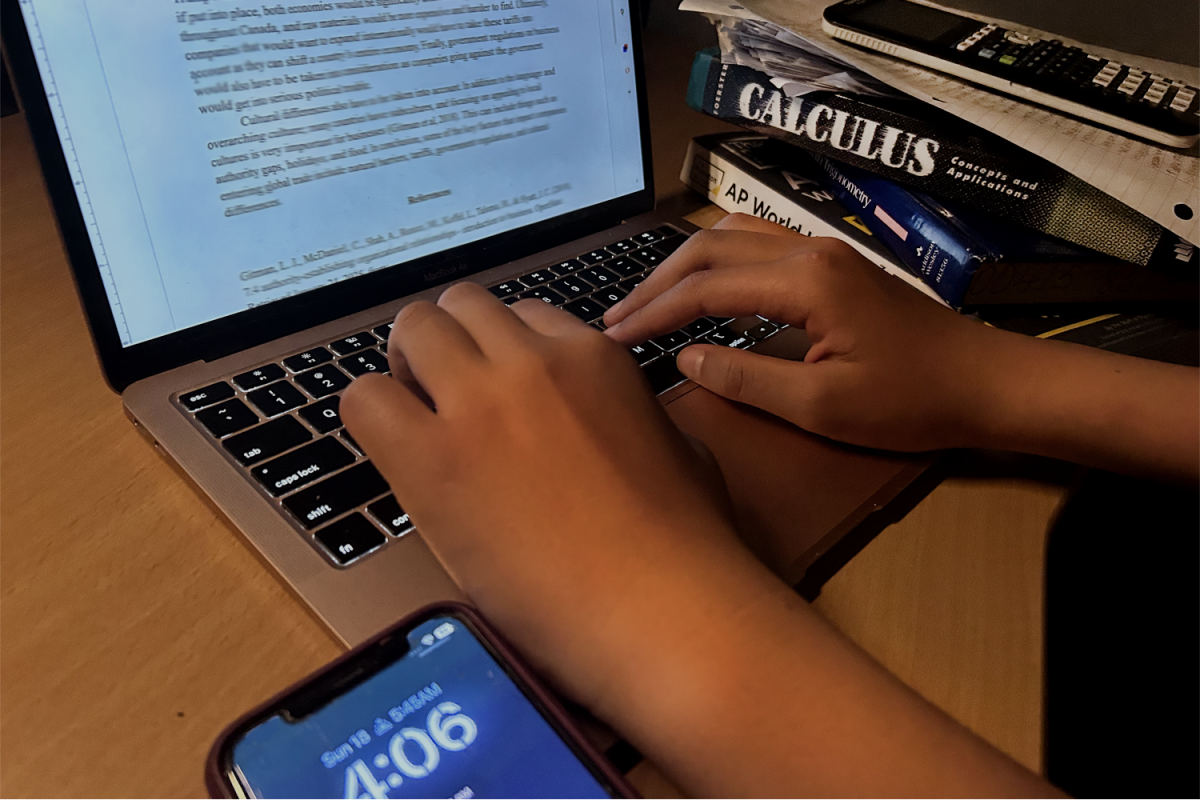The global COVID-19 pandemic turned the spotlight towards the role of technology in students’ learning environments, with distance learning and the return to school relying entirely upon the student body’s access to computers.
However, this debate of the importance of electronic devices in school has long existed since before the shift to virtual classes. More specifically: are phones and computers a necessity in the classroom?
For some time now, Carlmont has supplied Chromebook computers for classes to complete online work on. After the return to in-person school, however, Carlmont implemented that students must bring their own devices since it was shown that all students have access to technology.
Needless to say, this change is the beginning of a transition towards a more technology-based learning environment in general. Amongst the students, many support this transition.
Angel Camacho Fuentes, a sophomore student at Carlmont, believes the use of phones and computers both belong in the classroom. While technology offers utility and access to digital work outside of the classroom, Fuentes also believes that phones and computers provide the same amount of utility in a classroom.
“They can be helpful for searching anything on the web and can perform functions that other teaching materials can’t, such as whiteboards or notebooks,” Fuentes said.
Other students agree with Fuentes and advocate for the accessibility computers and phones offer.
“They are an important resource for students and teachers,” said Andrew Cruz, a junior at Carlmont. “Most teachers use Canvas to post assignments, and phones and computers give students better and easier access to view their assignments online.”
Carlmont has been using Canvas as an online platform for students and teachers to assign and submit assignments for many years now, and it has proved to be an effective online tool for the school.
This is one of the main reasons that Cruz supports the use of technology in the classroom. Along with the accessibility that it offers, additional teaching platforms and tools can be very useful for both students and teachers.
“Student devices give teachers more opportunities to assign digital work — such as with Canvas discussions, online labs, and Edpuzzles — which allows for more flexibility in their lesson plans,” Cruz said.
The Carlmont administration has similar opinions to students on the matter, as they also deem phones and computers a great tool for learning.
Grant Steunenberg, an administrative vice principal at Carlmont, supports the better student access to the school curriculum that technology use offers.
“The implementation of technology in the classroom only furthers this objective of providing academic opportunities for all our students,” Steunenberg said.
Students, teachers, and administration alike share the notion that the educational use of technology gives students better and easier obtainability to their studies. However, there are some concerns about dependence on technology causing more issues that could interfere with education.
“When the power goes down, it highlights how our reliance on technology can impact the way we access education,” Steunenberg said.
To combat the faults with technology dependency, the Carlmont administration ensures that they will do whatever they can to prevent such problems. One issue is the students’ ability to each procure their own computer, which was addressed in a newsletter from Principal Ralph Crame in July 2021.
“Carlmont is transitioning into a 1-1 environment where the expectation is that all students will have a device with them in class to enhance the in-person learning experience and ensure they have the necessary tools,” the letter said. “The district is in support of this and is providing a Chromebook for any student who does not currently have their own Chromebook to use.”
Another factor to consider is the possibility of students losing the ability to work without a computer at hand; however, with technology’s rapid involvement in practically everything in the world, it may be beneficial for students to get accustomed to relying upon phones and computers.
With the objective of better academia in current education, students and staff at Carlmont have both expressed their content and support for the inclusion of electronic devices in a learning environment.












